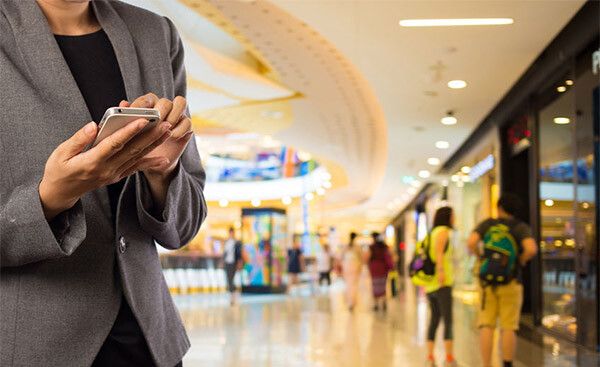
Whether it be the local mom & pop outpost or big box superstores, brick & mortar retailers have been increasingly under strain in the past several years due to major shifts in consumer buying patterns.

Whether it be the local mom & pop outpost or big box superstores, brick & mortar retailers have been increasingly under strain in the past several years due to major shifts in consumer buying patterns. Internet sales are booming, and even those with a sense of urgency for their purchases are able to find satisfaction online through same day delivery (in some areas) with retailers like Amazon. In the fight to stay relevant, many brick & mortar businesses are turning to big data and other technology solutions.
Shifting Consumer Buying Patterns
It’s no surprise that consumers are buying more online and taking fewer trips to their local retailer. In 2015 alone, internet sales rose by about 23% and Amazon now captures over a quarter of all online sales. While some low price retailers continue to do well, such as TJ Maxx and Nordstrom’s Rack stores, existing full-service retailers fight to continue attracting consumers with new tactics. The traditional “annual sales” and coupon deals don’t work as they once did.
As a result, many retailers are shifting their culture and reallocating resources to leverage big data. Through big data, retailers enable a unique and personal shopping experience for their customers.
Big Data Drivers in Retail
Consumers increasingly view taking a trek to the local brick and mortar store as a chore. To change that stigma, big data helps retailers learn about their consumers and their shopping habits in several ways.
- Beacons. Beacons are now being used in stores to both track and communicate with shoppers in real time. Through the use of Bluetooth Low Energy (BLE) signals, a stores connect with mobile devices and either steer registered shoppers to certain products or send them coupons offering specific discounts. This same big data retail technology can track shopper movement and behavior within a store.
- RFID tags. Radio frequency identification (RFID) tags can be applied to individual products in a store, which are useful for both inventory tracking and delivering a heightened level of customer service. Using an RFID tag, customers make purchases online and then immediately pick up those items in the store. Physically getting customers to the store, even if just for pick up, creates an opportunity for additional purchases.
- Video cameras. While CCTV images can’t be used to identify individual customers in most cases due to privacy issues, they are invaluable for tracking consumer behavior and gathering demographic data.
- Visual light communications. Similar to beacon technology, VED lights (or VLC) communicate with mobile phone cameras through a unique lighting pattern and can gather data about customer movements and purchases.
- Guest Wi-Fi. Retailers won’t necessarily hack into your mobile phone through their free Wi-Fi, but they can track your visits to their store. Store Wi-Fi can track how many devices are in the store at any given time, the length of stay, and even repeat visitors.
Integrated Technologies for the Customer Experience
While gathering and tracking consumer data tells retailers a lot about their customers, new technology also facilitates an improved overall customer experience.
- Mobile point of sale. Soon consumers won’t have to stand in line at sales counters to pay for purchases. Instead, sales associates roaming the store with mobile point of sale (POS) tablets will be able to handle quick check-outs.
- Virtual Reality. Virtual reality (VR) headsets can be used for product demonstrations, to give tours of virtual showrooms, or even to try on virtual clothing and accessories.
- Interactive Media. The use of touch screens and projection technology in stores can create an interactive sales environment. Customers can learn more about products, getting specific questions answered, by engaging with digital media.
- Fitting Room Technology. Many of these integrated technology elements are being combined to enhance the customers experience in the fitting room. Innovative new fitting room systems are feature full-length mirrors, touch screens, and even video. RFID tags trigger the system, which show more details about the product, make additional suggestions, and even communicate with sales associates when needed.
While brick and mortar retailers may face some significant challenges from online retailers, it’s the leveraging of technology itself that will keep the survivors relevant moving forward.